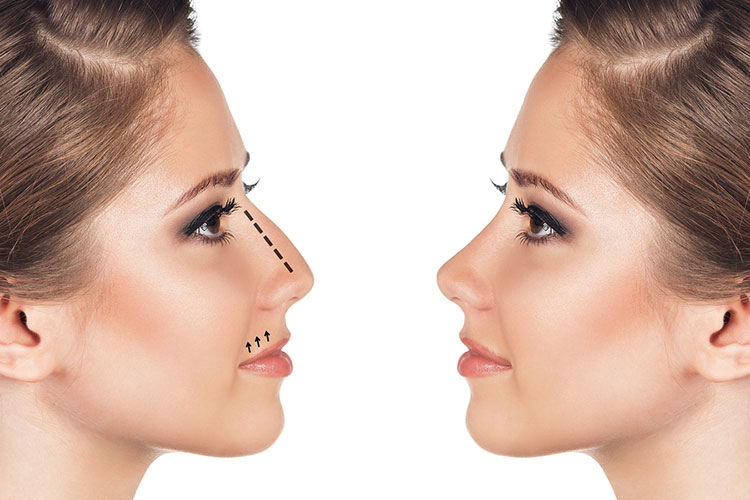Throughout history, humanity has attached great importance to nose aesthetics. When you picture ancient sculptures, you will see how prominent the nose is in all of them. For some, it is a symbol of a strong character, for some, it is an indispensable element of beauty, for some, it is just a breathing organ, and for some, it appears as a problem that disrupts facial aesthetics. Therefore, this is such a problem that people are most disturbed by themselves and are even willing to undergo surgery many times.
What is Nose Filler?
Nasal fillers are ready-made fillers that lose their volumetric effect by slowly breaking down and being absorbed after a while after being injected into the body. The absorption time of fillers varies depending on the molecular structure of the filler, how much is injected, and which part of the face it is injected into. This period is usually about 6 to 12 months.
The most frequently used temporary fillers during the procedures include hyaluronic acid, calcium hydroxyapatite, poly-L lactic acid and collagen. Temporary fillers currently in use differ from each other in terms of their molecular structure, antigenic effect, absorption time from the body, and the changes they cause in skin and soft tissue cells.
How To?
Rhinoplasty, which is performed without making any incisions or using a scalpel during the surgery, that is, without making any incisions on or inside the nose, brings with it various advantages and disadvantages. The positive and negative aspects of non-surgical rhinoplasty, or nose filler aesthetics performed using the filling method, are actually directly related to the patient’s nose structure and the patient’s expectations from the operation.
We can list the advantages of scalpel-free nose filler aesthetics as follows:
No anesthesia is required.
The procedures are performed without leaving any scars on the face.
Completion of the application in just 10 to 15 minutes.
No recovery period is required after the application is completed.
For what purpose are fillings used?
The substances used in aesthetic filler applications are divided into three groups according to their effectiveness: permanent fillers, semi-permanent fillers and non-permanent fillers.
The effects of permanent and semi-permanent fillers last for 2 to 5 years. However, they are less preferred due to side effects such as allergic reactions due to these substances and the formation of hard tissue under the skin by fillers.
Hyaluronic acid fillers, which are preferred for aesthetic purposes and are not permanent, are used very often. This substance used is a support substance found under the skin, and its amount in the skin gradually decreases with age. Hyaluronic acid fillers, which are used as fillers, are meticulously prepared in a laboratory environment and are extremely compatible with the skin.
What are the Fees?
To get accurate information about fees, you can leave your number in the inquiry form on the left. To get detailed information about nasal filling operations performed in our hospital, you can contact our experts at 0507 242 81 81 – 0507 242 81 81 and ask any questions you may have.
Discharge and Recovery Time
After the application is completed; Local swelling, bruising, and redness at the tip of the nose may occur, which begin to heal in a short time, and may sometimes last for about 15 days. One of the best aspects of this method is that you get the chance to try it first. There are also safe materials available that can dissolve this filler within 2 to 3 days if you do not like it. However, there has never been a patient who was dissatisfied with their nose and wanted to dissolve the filling.
Facial filler hyaluronic acid is performed under office conditions and by a doctor. The application time is between 10 and 15 minutes, depending on the number of application areas. You can leave immediately after the procedure and return to your normal life.
What are the Side Effects and Risks?
The possible side effects of all facial filler applications also apply to nasal fillers. Allergic reaction, bleeding, infection, and granuloma formation are among these complications. The most important thing to know here is that in experienced hands and when used appropriately, the complication rate is very low.
Is Nose Filling Permanent?
Although it varies depending on the area where the application is made, Hyaluronic acid derivatives can last for approximately 8 to 12 months. Calcium hydroxyapatite derivatives, on the other hand, can maintain their effect for approximately 18 months in the applied area, but can only be applied to specific areas.

